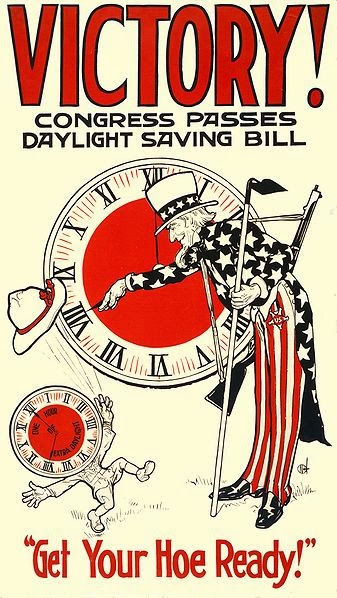 |
| Lobby Card with Scooper, Dick Lawrence and Janie |
Life looks pretty good for the Conways despite the war. Until now, that is. After learning that the Army plans to open a base nearby, Mr. Conway had written an editorial opposing it, worried that so many soldiers around so many impressionable, young energetic, boy crazy girls might not be such a good idea. Now, he is trying to get special priority from Washington for a new printing press, and his requests are being ignored.
Meanwhile, Mrs. Conway's old friend, Thelma Lawrence, is arriving in Hortonville with her son, a private in the Army and needs a place to stay. Of course, once they arrive at the house, and Janie meets Private First Class Dick Lawrence, it is instant attraction, much to Scooper's distress.
When Janie's parents make plans to go out for an evening with Mrs. Lawrence, Janie decides to seize the opportunity to see Dick Lawrence alone in the Conway house. But now some of her girlfriends also have boyfriends in the Army and no place to see them, and since they know Janie is home alone, they all drop by.
Elsbeth, always in the way, is sent off to her grandmother's on what should have been a short bus ride with Dick, but she gets the on the wrong bus intentionally because she likes riding buses. Dick runs into his old chemistry professor, who also likes to ride buses and hands Elsbeth over to him so he can get back to his evening with Janie.
Scooper, jealous of Dick, calls the Army base and tells them to send over more soldiers, that there is a party going on at the Conway house for them. Before long, the house is filled with servicemen and their girlfriends, more of Janie's girlfriends, music, singing and dancing. There are even plenty of wieners to eat and pop to drink. Before long, the furniture is pushed aside and a long conga line forms. Janie's quiet evening with Dick turns into the biggest and best party Hortonville has ever seen.
 |
| Lobby Card |
I watched Janie on a gloomy, rainy, chilly Sunday afternoon and it really was a fun thing to do. It is a very fast paced film, and a lighthearted war movie. Janie, played by Joyce Reynolds, is a bubbly teen, always up to things she would rather her parents didn't know about, like going off to a blanket party (a party where everyone brings their own blanket to sit on, to "smooch" with their boyfriends. Janie speaks a mysterious lingo with her friends, really just the slang of the day, but it totally bewilders her dad.
This was definitely a feel good movie made for a war weary audience, released on September 2, 1944. It was highly recommended by movie editors in magazines like Child Life, Calling All Girls and Life, having appeal for both adults and teens. As much fun as Janie is, though, I can't say it reflects the life of the average American teenage girl in 1944. And the feminist side of me did bristle somewhat at how boy crazy girls were portrayed.
Originally a successful Broadway play, Janie was made into a movie by Warner Bros., and directed by Michael Curtiz, who had already won an Academy Award in 1944 for directing a film you may be familiar with called Casablanca.
Hattie McDaniel, another Academy Award winner for her portrayal of Mammy in Gone with the Wind, plays April, the Conway's maid. Unfortunately for this favorite talented woman, playing the role of a maid was the part she was always cast as during the war.
Other well known actors who appeared in Janie were Robert Hutton as Dick Lawrence, Edward Arnold as Charles Conway, and Ann Harding as Lucille Conway. Ironically, it turns out that the irrepressible, but annoying younger sister Elsbeth was played by Clare Foley who made only two movies in her film career: Janie and the 1946 sequel Janie Gets Married. I could not find any more information about her.
And here is some real trivia: I used to watch reruns of the original Mickey Mouse Club when they were on late at night and I was still writing papers for grad school. If you remember the Mickey Mouse Club and happen to catch Janie on TMC, see if you can find Jimmy Dodd, head Mouseketeer and song writer (Hint: he is an uncredited soldier during the party scenes).
This movie is recommended for viewers age 11+
This movie was watched onTurner Movie Classics (it isn't available on DVD yet, but runs pretty frequently on TV.













